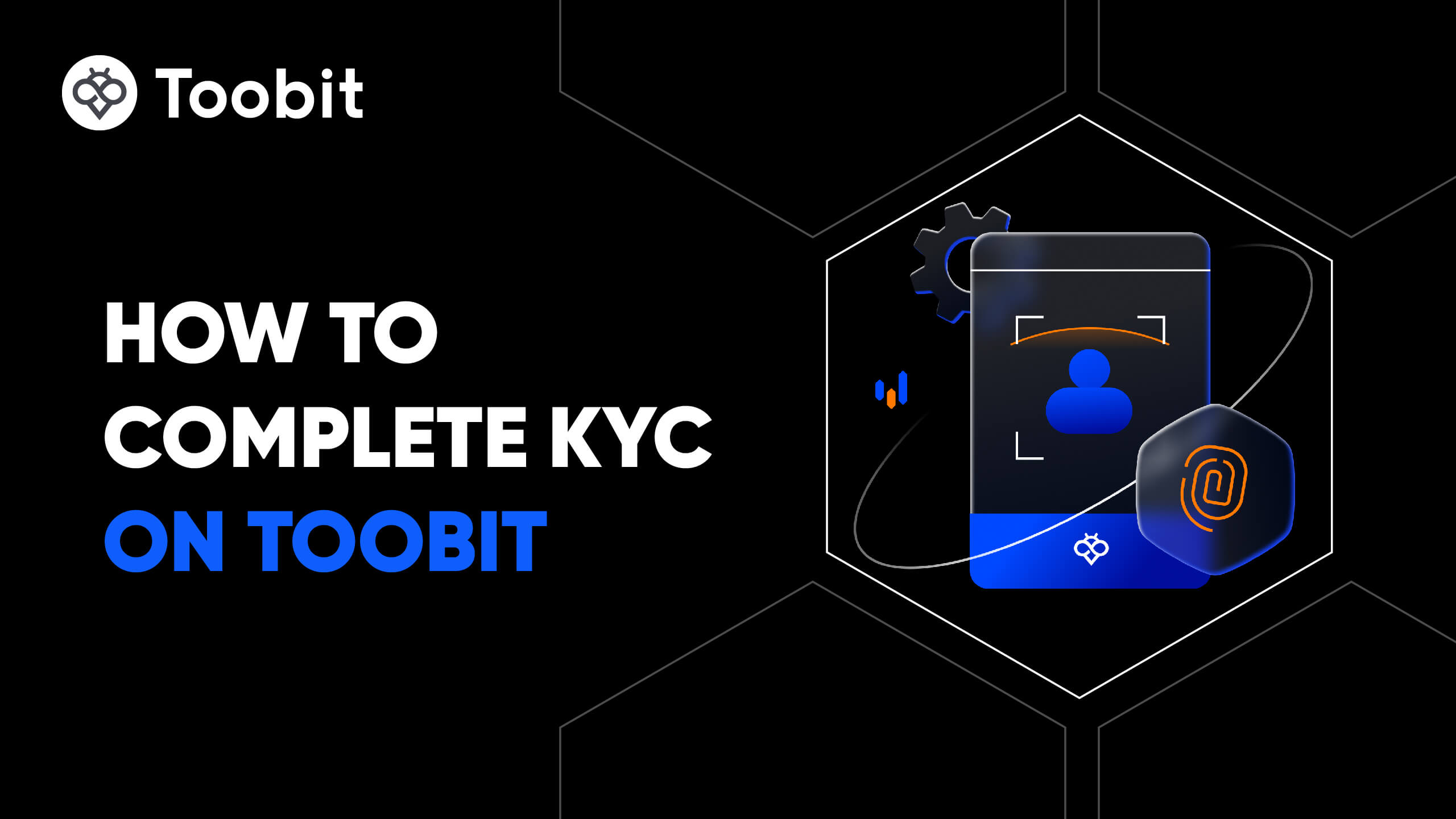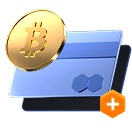--USD+0.00%1D
本日(UTC+0)、--時点でのundefinedにおけるZetaChain (ZETA)の価格は-- USDです。
ZetaChainからUSDへのリアルタイム価格チャート(ZETA/USD)
ZetaChain のマーケット情報
価格パフォーマンス(24時間)
24時間
24時間 安値 --
24時間 高値 --
歴史的な高値
2.854005954477877
価格変動(24時間)
+0.00%
価格変動(7日間)
--
市場ランキング
#286
時価総額
81,253,711.6910744
24時間 の取引量
7.56M
循環供給
1.16B
最大供給量
2.10B
総発行数量
2.10B
リンク
USD における本日の ZetaChain のリアルタイム価格
現在の ZetaChain のリアルタイム価格は -- で、現在の時価総額は 81,253,711.6910744 です。ZetaChain の価格は過去24時間で 0.00% 上昇しており、24時間の取引高は 7,561,745.47338396 です。ZETA/USD(ZETA から USD)の変換レートはリアルタイムで更新されます。
1 ZETA は でいくらですか?
現在、 における ZetaChain (ZETA) の価格は -- です。今なら、1ZETA を USD で購入できます。過去24時間では、ZETA から USD の最高価格は --、最低価格は ZETA から USD で -- です。
ZetaChain(ZETA)に関して
ZetaChain は、チェーンに依存しない相互運用性 (EVM 互換、Cosmos/IBC、Bitcoin、Dogecoin、Tron など) が組み込まれた新しい L1 です。開発者は現在、ZetaChain のメッセージング機能を使用して、任意のチェーン間でデータとネイティブ値 (アセットをラップせずに) を送信しています。
ZetaChain はネイティブ スマート コントラクトもサポートします。これにより、開発者は単一のコントラクトからチェーン全体の資金を調整するオムニチェーン dApp を構築できます。
ZetaChain の価格履歴
時間
価格制限
低い
高い
24h
+0.00%
--
--
0d
+0%
$0
$0
0d
+0%
$0
$0
0d
+0%
$0
$0
なぜ ZetaChain の価格は常に変動するのですか?
ZetaChain の価格パフォーマンスに影響を与える要因は何ですか?
グローバルな ZetaChain の価格
ZetaChain は現在、他の通貨でいくらの価値がありますか?最終更新:--(UTC+0)。
ZetaChain の購入方法
無料のToobitアカウントを作成
メールアドレス/携帯電話番号および居住国を使用してToobitに登録し、アカウントを保護する強力なパスワードを作成しましょう。
本人確認を行う
個人情報と有効な写真付きIDを提出して本人確認を完了してください。
支払い方法を追加して ZetaChain (ZETA) を購入
Toobitアカウントの認証完了後にクレジット/デビットカードや銀行口座を追加してください。複数の支払い方法でToobit上の ZetaChain を購入できます。
ZETA 無期限先物を取引する
Toobitに登録してUSDTまたはZETAトークンを購入すると、ZETA先物取引やマージントレードなどのデリバティブ取引を開始して収益を増やすことができます。
リードトレーダーと一緒に ZETA コピー取引に参加
Toobit に登録して USDT または ZETA トークンを購入すると、リードトレーダーをフォローしてコピートレーディングを始めることができます。
ZetaChain はどこで購入できますか?
Toobitアプリで暗号資産を購入
数分で登録し、クレジットカードまたは銀行振込で暗号資産を購入しましょう。
Toobitで取引する
暗号資産をToobitに入金し、高い流動性と低い取引手数料をお楽しみください。
ビデオセクション — 簡単本人確認、迅速な取引

Toobitで本人確認を完了し、詐欺から身を守る方法
- 1.Toobitアカウントにログインしてください。
- 2.Toobit を初めてご利用の方は、アカウント作成方法のチュートリアルをご覧ください。
- 3.ナビゲーションバーの右上にあるプロフィールアイコンをクリックし、「本人確認」ページをタップしてください。
もっと
ZETAに関するFAQ
なぜZETAの価格は常に変動するのですか?ZETAの価格に影響を与える要因は何ですか?
他の資産と同様に、ZETAの価格変動は主に供給と需要の力によって形成されます。これらは、ブロック報酬の半減期、プロトコルのアップグレード、ハードフォークなどの重要な開発によって影響を受ける可能性があります。規制の変更、企業や政府による採用、取引所のセキュリティ侵害、その他の重要な出来事などの外部要因も、ZETAの価値を形成する上で大きな役割を果たすことがあります。その結果、市場資本化は急激な変動を経験することがあります。ZETAの将来のパフォーマンスを予測するために、多くのトレーダーは大量のZETAを保有する「クジラ」の活動に注目しています。伝統的な市場と比較してZETA市場の規模が比較的小さいため、これらのクジラは取引活動によって価格変動にかなりの影響を与えることができます。ZETAを購入するのに良いタイミングはいつですか?今、ZETAを買うべきですか、それとも売るべきですか?
購入の良いタイミングは、いくつかの要因に依存します。市場のセンチメントとトレンド市場の統合や上昇トレンドの兆候を探します。市場の下落時に購入すること(十分な調査の後)は、ZETAの長期的な可能性を信じるなら有益です。価格が誇大広告によって急上昇したときは購入を避けてください。これはしばしば修正につながる可能性があります。テクニカル指標サポートレベル: 歴史的に価格が安定する強いサポートレベル付近で購入することはリスクを軽減できます。売られ過ぎシグナル: RSIのようなツールは、ZETAが売られ過ぎのときを特定するのに役立ち、上昇への反転の可能性を示すかもしれません。基本的な発展主要なアップグレード、パートナーシップ、または採用を促進し価値を高める可能性のあるポジティブなニュースの前に投資します。インフレや規制の変化のような世界的なトレンドが広範な暗号市場に影響を与える可能性があるため、マクロ経済の状況を考慮します。今、ZETAを買うべきか売るべきか?決定するために、これらの重要な側面を評価します。購入条件強気の勢い: 市場が明確な回復または成長の兆候を示している場合、参入の機会かもしれません。長期的なビジョン: ZETAがあなたの投資論に合致し、長期的な可能性を見ている場合、現在のボラティリティはそれほど懸念されないかもしれません。売却条件目標達成: ZETAが利益目標または売却トリガーとして設定した価格に達した場合、退出する時かもしれません。弱気の兆候: 市場が勢いを失っている場合や外部要因(例: 規制の課題や採用の減少)が持続的な下方圧力を生み出している場合、売却は資本を保護するかもしれません。戦略的なヒントドルコスト平均法(DCA): ボラティリティの影響を最小限に抑えるために、定期的に少量のZETAを購入します。ポートフォリオのバランス: 資金をすべてZETAに投入しないでください。リスクを軽減するために多様なポートフォリオを維持します。ストップロス注文: 重大な下落に対する保護としてストップロス注文を使用します。ZETAが強力な基礎を示し、その可能性に対して低評価されており、支援的な市場環境がある場合、購入するのに良い時期かもしれません。逆に、現在の価格が過大評価されていると考えるか、市場状況が好ましくない場合、売却または保有することがより良い選択かもしれません。ZETAは良い投資ですか?
ZETAが良い投資かどうかを判断するには、あなたの財務目標、リスク許容度、ZETAの基本的な要素と市場での位置付けなど、いくつかの要因に依存します。以下は、その投資可能性を評価するための構造化されたアプローチです。1. ZETAの基本を理解するユースケース: ZETAはどのような問題を解決しますか?強力で独自のユーティリティを持つ暗号通貨は、長期的な見通しが良いことが多いです。技術: ブロックチェーンの強度、スケーラビリティ、取引速度、安全機能を評価します。チームと開発: 強力で透明性のあるチームと明確なロードマップが信頼と長期的な実行可能性を高めます。2. 市場での位置付けと競合採用: ZETAはユーザー、企業、開発者によってどの程度採用されていますか?競争: ZETAは類似プロジェクトからの強い競争に直面しており、何がそれを際立たせていますか?市場シェア: 他の暗号通貨と比較して、その時価総額と取引量を見てください。3. 価格のパフォーマンスとボラティリティ歴史的傾向: ZETAの過去の価格動向を分析します。安定した成長を示しているか、それとも明確な上昇傾向なしに非常に不安定ですか?現在の評価: ZETAは同業他社と比較して過小評価されているか、過大評価されていますか?価格売上高比率(P/S)やネットワーク価値対取引(NVT)などのツールが役立ちます。4. 外部要因規制環境: ZETAは規制に準拠した方法で運営されていますか?将来の法的問題がその価格に影響を与える可能性があります。市場動向: 暗号通貨の広範なトレンドやインフレ、ブロックチェーン技術への関心の高まりなどのマクロ経済条件がZETAの成長に影響を与える可能性があります。5. 考慮すべきリスク市場のボラティリティ: 暗号通貨は非常に不安定であり、ZETAも例外ではありません。大幅な価格変動に備えてください。採用リスク: ZETAが普及しない場合、その価値は停滞または低下する可能性があります。セキュリティリスク: ハッキング、詐欺、技術的な脆弱性がその信頼性と価格に影響を与える可能性があります。最終的な考えZETAは次の場合に良い投資となる可能性があります:その長期的なユースケースと技術的基盤を信じている。強力な採用指標と競争上の優位性を持っている。暗号通貨投資の固有のリスクを管理する準備ができている。2030年のZETAの価格はどうなるでしょうか?
2030年の予測では、ZETAは大幅な成長を遂げるとされ、価格は$ 0.706981から$ 1.001021の範囲で変動すると予想されています。投資家は339.31%の潜在的なROIを期待でき、年の強気な見通しと一致しています。ZETAとは何ですか?
ZetaChainは、ビットコイン、イーサリアム、ソラナなどの主要ネットワークにネイティブにアクセスできる最初のユニバーサルブロックチェーンとして、クロスチェーンの相互運用性を再定義しています。これにより、ラップされた資産や複雑なブリッジソリューションが不要になります。摩擦のないユーザー体験と統一された流動性を提供することで、ZetaChainは世界中の次の10億人のユーザーによる暗号通貨の採用への道を開いています。ユニバーサルEVMで一度構築し、どこでも展開ZetaChainの中心にはユニバーサルEVM(uEVM)があり、開発者がどのチェーンでもシームレスに動作するユニバーサルdAppを作成できる強力なイノベーションです。これにより、開発者はZetaChain上でスマートコントラクトを書き、従来はスマートコントラクト機能を持たないビットコインを含む他のブロックチェーン上の資産やデータと直接やり取りできます。マルチチェーンの未来は今ZetaChainを使用すると、分断されたブロックチェーンの世界が単一の統一されたエコシステムになります。DeFiプロトコル、クロスチェーンNFT、次世代Web3アプリケーションを構築する際、ZetaChainは複雑さを取り除き、真のチェーンに依存しない開発を可能にします。孤立したネットワーク間のギャップを埋め、ネイティブで安全かつスケーラブルな環境を提供することで、ZetaChainはオムニチェーンの未来のバックボーンとして位置づけられています。ユーザーと開発者は、タブを切り替えるように簡単にチェーン間でやり取りできます。ZETAネットワークはどのように保護されていますか?
ZetaChainは、Cosmos SDKを使用して構築され、Tendermintコンセンサスによって駆動される最先端のProof-of-Stake(PoS)ブロックチェーンであり、ブロックチェーンエコシステム全体にわたる分散型、許可不要、透明な接続を可能にするよう設計されています。そのアーキテクチャにより、Ethereum、Bitcoin、BNB Chain(BSC)、Solana、Avalanche、Terra、Polygon、Optimism、Arbitrumなどのレイヤー2ソリューションといった主要ネットワークとネイティブに相互作用することができます。中央集権的なブリッジやカストディアンに依存することなく。ZetaChainの動作: バリデーター、オブザーバー、サイナーZetaChainプロトコルは、3つの主要な役割からなる堅牢なアーキテクチャに支えられています: バリデーターはブロックの生成とコンセンサスを担当し、ステークした$ZETAの量に基づいて報酬を得ます。 オブザーバーは外部ブロックチェーンの状態とイベントを監視し、リアルタイムで正確なクロスチェーン通信を保証します。 サイナーは分散型キー管理システムを利用して、ECDSA/EdDSA暗号を使用してチェーン間のトランザクションを安全に署名します。 ZetaChainは、GG20リーダーレスしきい値署名スキーム(TSS)を実装し、分散型のキー生成と署名を可能にします。どのノードや参加者も完全な秘密鍵を持つことはなく、高レベルの暗号セキュリティを確保し、単一障害点を排除します。完全に透明で検証可能、不変すべてのインバウンドおよびアウトバウンドトランザクション、重要なプロトコルの決定と状態の変更は、ZetaChainの台帳に不変に記録されます。これらの記録は公に検証可能で改ざん不可能であり、誰でもアクセス可能です。ユーザーと開発者に完全な透明性と監査可能性を提供します。孤立したブロックチェーン間のギャップを信頼性があり、安全でスケーラブルな方法で橋渡しすることにより、ZetaChainは次世代の分散型アプリケーション(dApps)とWeb3インフラストラクチャのためのクロスチェーン相互運用性を再定義しています。ZETAの購入方法
ToobitでのZETA購入方法:ステップバイステップガイドステップ1:Toobitでアカウントを作成ZETAを購入するには、Toobitを訪れてアカウントにサインアップします。詳細を入力し、アカウント設定を完了して登録プロセスに従ってください。ステップ2:本人確認(オプション)すべての取引で確認が必須ではありませんが、完了すると引き出し限度額が高くなり、アカウントのセキュリティが向上します。ステップバイステップの手順については、Toobitでの本人確認の完了方法ガイドを参照してください。ステップ3:資金を入金Toobitアカウントに資金を追加します。クレジット/デビットカードを使用して入金するか、外部ウォレットから暗号通貨を転送できます。進む前に、アカウント残高が入金を反映していることを確認してください。ステップ4:マーケットセクションに移動アカウントに資金が入ったら、プラットフォームの「マーケット」セクションに移動します。ここでZETAを閲覧および検索できます。詳細については、Toobitでの暗号通貨の購入方法ガイドもご覧ください。ステップ5:ZETAを購入利用可能な暗号通貨のリストからZETAを見つけます。それを選択し、購入したい金額を入力して取引を確認します。ToobitでZETAを引き出す方法
Toobitでは、ZETAやその他の暗号トークンをUSDTに引き出すことができます。ToobitからZETAを引き出すのは簡単なプロセスで、資金を外部ウォレットや取引所に転送できます。また、プラットフォーム上でZETAを直接USDT(Tether)に変換することも可能です。以下の手順に従って、ZETAを安全かつ効率的に引き出してください。ステップ1: Toobitアカウントにログインまず、資格情報を使用してToobitアカウントにログインします。完全な引き出し機能にアクセスするために必要な身元確認を完了していることを確認してください。ステップ2: ウォレットセクションに移動ダッシュボードから「ウォレット」または「資産」タブに移動します。このセクションには、現在の暗号残高が表示され、ZETAの保有も含まれます。ステップ3: ZETAを引き出すために選択ウォレットリストでZETAを見つけます。ZETAの横にある「引き出し」ボタンをクリックします。USDTで引き出したい場合は、まずToobitの取引プラットフォームを通じてZETAをUSDTに変換できます。ステップ4: 引き出し詳細を入力ZETAの送信先アドレスを入力します。これは外部のZETAウォレットや他の取引所のアドレスである可能性があります。アドレスを二重に確認して正確性を確保してください。暗号取引は取り消し不可能です。引き出したいZETAの量を指定します。ネットワーク手数料と取引の推定時間が表示されます。ステップ5: 確認と認証引き出しの詳細を慎重に確認します。追加のセキュリティのために、二要素認証(2FA)ステップを完了します。確認後、リクエストを送信します。ステップ6: 引き出しを追跡送信後、「引き出し履歴」セクションで引き出しのステータスを監視できます。ネットワークの混雑状況に応じて、引き出しは通常数分以内に処理されます。これらの手順に従うことで、ToobitでZETAをシームレスに引き出したり、USDTに変換したりして、資金に迅速かつ安全にアクセスできます。詳細については、Toobitでの暗号引き出し方法ガイドをお読みください。
ZETA/USD 価格計算機
ZETA
USD
1 ZETA = -- USD。現在の1 ZetaChain (ZETA) から undefined への換算価格は -- です。レートは参考情報です。最新の更新。
Toobitは、主要な取引プラットフォームと比較して、比較的低い取引手数料の提供に努めています。VIPレベルが高いほど、より有利なレートが適用されます。
ランキング
データなし


